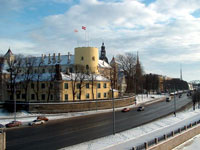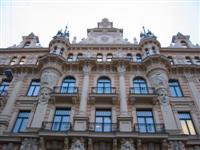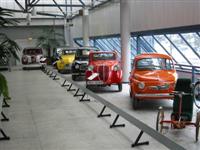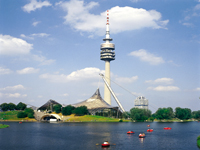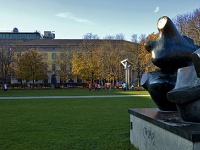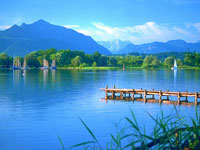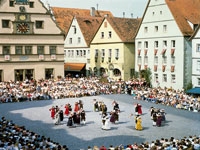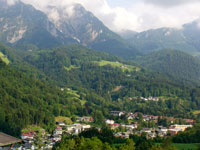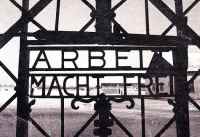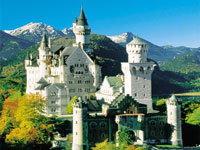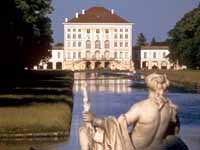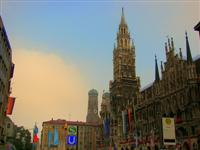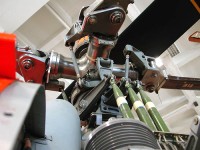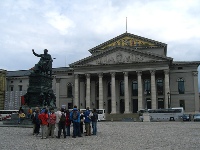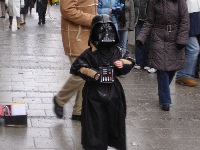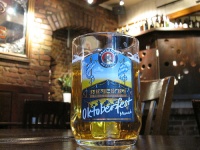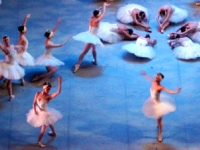If extraordinary food and wine are a temptation as you plan your next vacation to a farflung location, consider these seven outstanding options.



Babylonstoren, StellenboschSouth Africa (DrakensteinValley)Here’s something you’ve likely not yet experienced in your travels: a farm hotel. The guest suites here echo Cape Dutch farm buildings in the Cape Colony style of the 17th and 18th centuries, situated in the Drakenstein Valley between Franschhoek and Paarl and surrounded by mountains in the heart of the Cape Winelands. So it only stands to reason that food and wine are a major part of the sojourn: mornings, a must is the Babel breakfast, with fresh juices, homemade muesli and thick yogurts served with farm honey, plus eggs and local ham. Guests are invited to join chefs in the open kitchen or gather herbs from the eight-acre garden (they grow peanuts here among the 300 varieties of plants, and you’re welcome to taste), into which water is gravity-fed from streams. And, naturally, they make wine here: Chenin Blanc, Viognier, Shiraz, Chardonnay, and more; wine tastings and cellar tours may be booked online on the hotel’s website, and you can order it by the case as well. +27.0.21.863.3852;
babylonstoren.com.



Ponte Vineyard Inn
Temecula, CaliforniaThis Temecula vineyards debuted their
first harvest in 1985 (the just-next-door Ponte Winery opened 10 years ago), and the inn opened just last spring. Wine snobs need not bother visiting—the motto here is “If you like it, it’s good wine.” They’re a boutique producer that makes their wines in very small quantities—typically 1,500 cases per year for each variety—based on the premise that it allows the focus to remain firmly on quality rather than quantity. Also on premises is a topnotch restaurant that serves up market salads, grapewood-fired pizzas, fresh pasta, natural beef, sustainable seafood and homemade desserts—and, of course, a selection of wines, in a cozy outdoor dining area that you reach by walking through the Tasting Room. If you go, and you love it enough that you just know you’ll be returning, you can join the Ponte Winery Wine Club—members enjoy discounts on wine, stays at the inn, dinners at the Restaurant at Ponte, The Cellar Lounge, and Bouquet, and more. 35001 Rancho California Rd., Temecula, CA; 888.563.8885;
pontewinery.com.


Loisium Wine & Spa Resort
Suedsteiermark, AustriaA hotel and spa for wine lovers set amid rolling vineyards in one of Austria’s most popular white wine regions—and just opposite the famous Loisium Wine World, which is built over an underground labyrinth of 900-year-old wine cellars—this hotel designed by American architect Steven Holl appears to be floating on pillars and glass. All 82 guestrooms here feature the wine theme and have large windows overlooking the vineyards. Start your days with traditional Austrian breakfasts that include artisanal cheeses, sausages with mustard, local pastries and baked goods and a variety of coffees. Indulge in spa treatments that integrate grape and wine products, and wine-themed dinners in the resort’s restaurant. Among the activities guests can enjoy during their stay are wine-tasting seminars at the wine center next door to the hotel, tours through the surrounding vineyards, or a visit to the Danube valley’s monasteries and old castles. Loisium-Allee 2, 3550 Langelois, Austria, +43.2734.77100;
designhotels.com.


CuisinArt Golf Resort & Spa
AnguillaCuisinArt consistently draws rave reviews from vacationers and travel journalists alike—US News gave it five out of five stars on its Best Hotels list and Frommer’s awarded it three stars, the highest possible. And it’s no surprise. Perched on the edge of Rendezvous Bay at the western end of Anguilla, the hotel has huge rooms with walk-in closets, marble bathrooms and private terraces, plus a spectacular spa, to name a few of its attractions. But foodies get an added bonus: five restaurants. Drawing inspiration from flavor profiles of the world, executive chef Daniel Le Guénan and his team create a menu that maximizes the best of their global experience while including local flavors and fresh ingredients from the on-site hydroponic farm. Of particular interest to foodies: the Chef’s Table food and wine experience (every Wednesday from 7:30 pm-10:30 pm) includes a menu comprising six courses presented by Chef Guénan that are paired with wines from the property’s wine cellar, and cooking classes that include one Japanese-themed (think sushi rolls, traditional Japanese entrees and desserts) and one Professional Cooking Class in which participants work with the chef to create a meal from one main item. Rendezvous Bay, Anguilla, 264.498.2000;
cuisinartresort.com.


L’Andana, Tuscany(Tuscan Maremma retreat founded by Alain Ducasse)Renowned French chef Alain Ducasse has always loved Italy, so in 2004 he set up this resort in the Tuscan Maremma, an area of Italy that borders the Ligurian and Tyrrhenian seas. The building housing L’Andana was once a Medici villa and now is home to 33 rooms and suites; the property contains a gourmand spa and Tuscan trattoria—aptly named Trattoria Tuscana—that organizes cooking courses held by the team of resident chefs. When you’re not cooking, you’ll want to be eating: the La Villa restaurant here, with cast iron ovens that turn out freshly baked doughnuts, orange flower brioches, currant buns and cheesecake daily, is also the place to taste homemade yogurts, jams and marmalade, risotto with peas, streaky bacon and pecorino cheese, and exotic offerings such as stewed octopus and Borlotti beans. From March-Nov. 2013, the MasterChef at L’Andana 4-day package includes an array of unforgettable experiences including trips to the fruit and vegetable and fish markets with the kitchen’s chefs, time in the kitchen, dinners and autographed copies of Ducasse’s book, plus a certificate of attendance to the MasterChef class. For more details and pricing information, visit the website. 58043 Castiglione Della Pescaia, Italy;
andana.it.



Hotel Marqués de RiscalElciego, Spain (in Spain’s Rioja region)Designed by Frank Gehry and nestled in the Rioja alavesa, this 43-room hotel has made its name as the ideal destination for wine lovers. Local cuisine and fine wines are the specialty at Bistro 1860 and Marqués de Riscal Restaurant, both overseen by Michelin-starred chef Francis Paniego, where special tasting menus (including a wine tasting one) are offered. In between meals, grab light bites and wine (or a cocktail) at the Wine Bar, with its breathtaking views of the village of Elciego. Wine even plays a part in the spa experience: The Caudalíe Vinothérapie Spa specializes in elemental wine therapies; its signature treatment, the Grand Caudalíe facial relaxes, restores your complexion and accelerates cell renewal thanks to the grapeseed polyphenols in the products used. Calle Torrea 1, Elciego 01320, Spain; 34.945.180880;
hotel-marquesderiscal.com.



Fierro Hotel
Buenos Aires, ArgentinaThis hotel’s tagline is “the hotel for the gourmand,” and that is in no small part because of its HG Restaurant. HG stands for Hernán Gipponi, a native Spaniard but worldly chef who has earned Michelin stars during his previous stints at the Michelin-starred El Poblet (now called Quique D’Acosta) and the Guggenheim restaurant in Bilbao. Gipponi’s nine-course tasting menu makes excellent use of his skills, wherein locally sourced produce and the best of Argentine culinary traditions are given new life in a series of painstakingly prepared and impeccably presented dishes. The Tasting Menu (at $40 US, an insanely good value) features five, seven and nine courses served to the entire table. Wine lovers will enjoy the Friday happy hours and wine tastings (arranged by request in The Cellar, a special underground tasting area showcasing some of the country’s most interesting wines curated by Andrés Rosberg, President of the Argentina Sommelier Association and a Master Sommelier; private (optionally wine-paired) dinners can also be arranged in The Cellar for parties of up to eight. Guests of the hotel receive complimentary breakfasts throughout their stay. Soler 5862, Buenos Aires, Argentina, +54.11.3220.6800;
fierrohotel.com.

